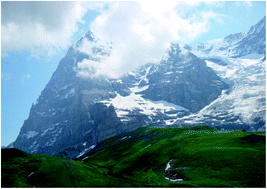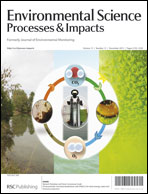Model-based exploration of the drivers of mountain cold-trapping in soil†
Abstract
A pollutant is said to undergo mountain cold-trapping if it is found at higher concentrations in a surface medium (soil, snow, foliage) high on a mountain, where it is colder, than in the same medium lower on the mountain. The processes that lead to mountain cold-trapping in soil were explored for a set of hypothetical Perfectly Persistent Pollutants (PPPs) by varying several environmental parameters in a fugacity based fate and transport box model. These parameters were: the spatial scale of the mountain; the rate and location of rain; the amount of particles in the atmosphere; the presence and magnitude of the upslope temperature gradient. The relative potential of each hypothetical PPP to exhibit mountain cold-trapping was expressed in terms of its Mountaintop Contamination Potential (MCP). The PPPs with the highest MCPs were those that neither were deposited from the atmosphere to the surface in the lower zones in the model nor left the model domain without being deposited at all. The simulations revealed that under most conditions wet-gaseous deposition is the biggest driver of mountain cold-trapping in soils, and its effects are greatly enhanced by large negative temperature gradients and increased precipitation upslope. Dry-gaseous and wet-and-dry-particle deposition processes cause similar PPPs to exhibit mountain cold-trapping, and the contributions to MCP by the dry processes are of the same magnitude as wet-particle deposition. Dry gaseous deposition alone is insufficient to cause mountain cold-trapping in soils under any conditions modelled here. Those measuring organic contaminants in mountains should expect to find that mountains with different climates cold-trap different pollutants, and that some mountains may not exhibit upslope enrichment of any species.


 Please wait while we load your content...
Please wait while we load your content...